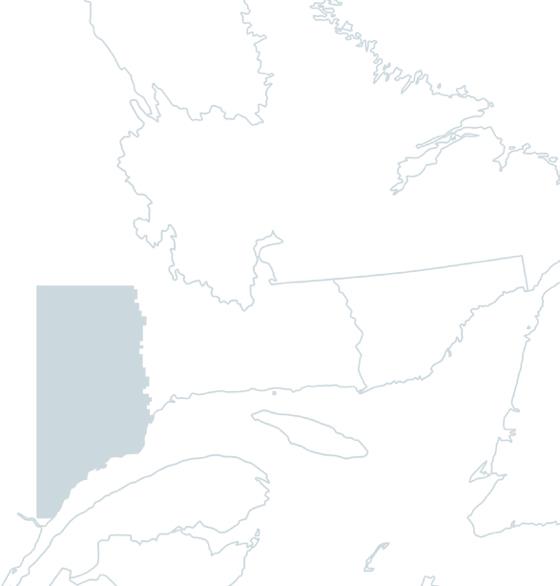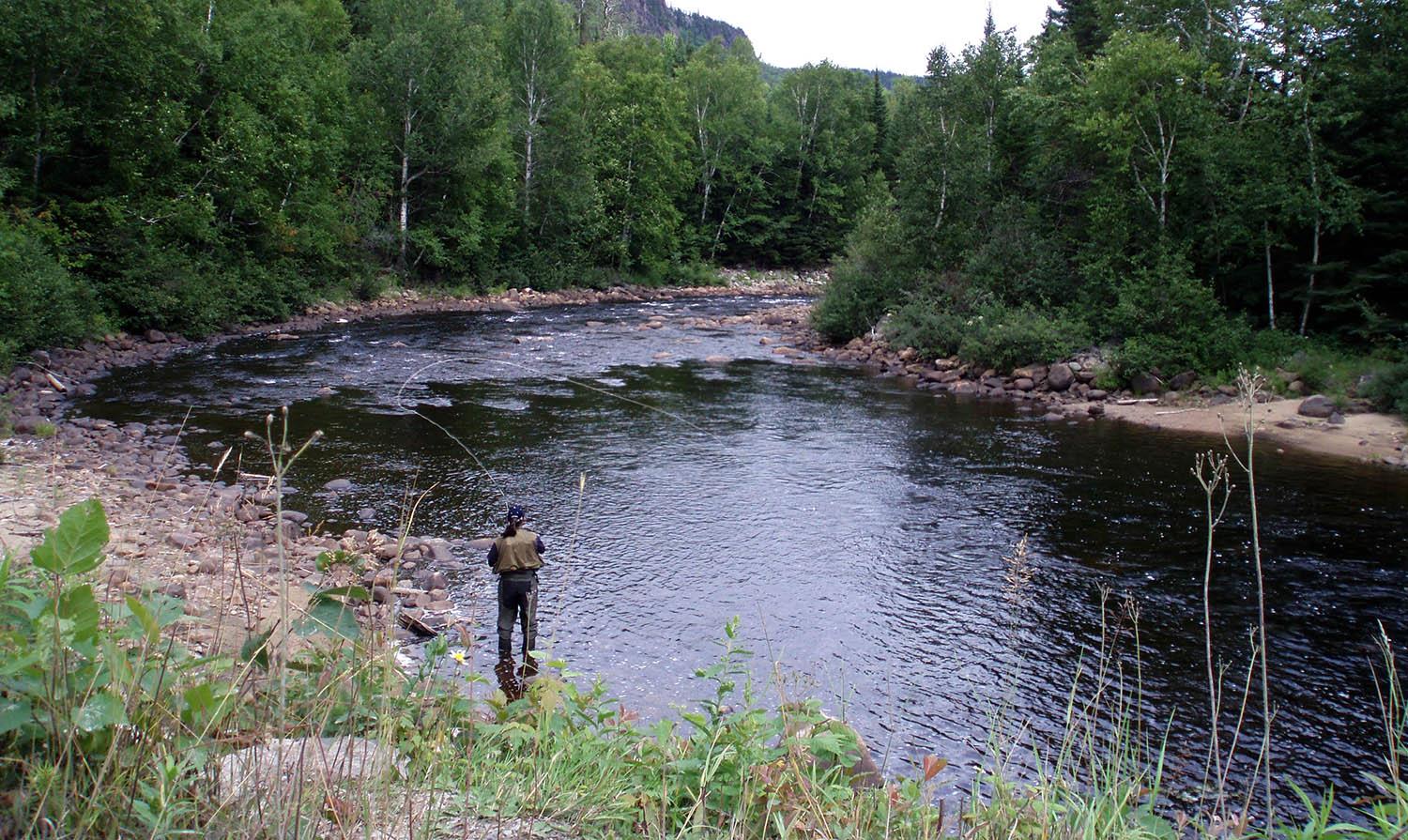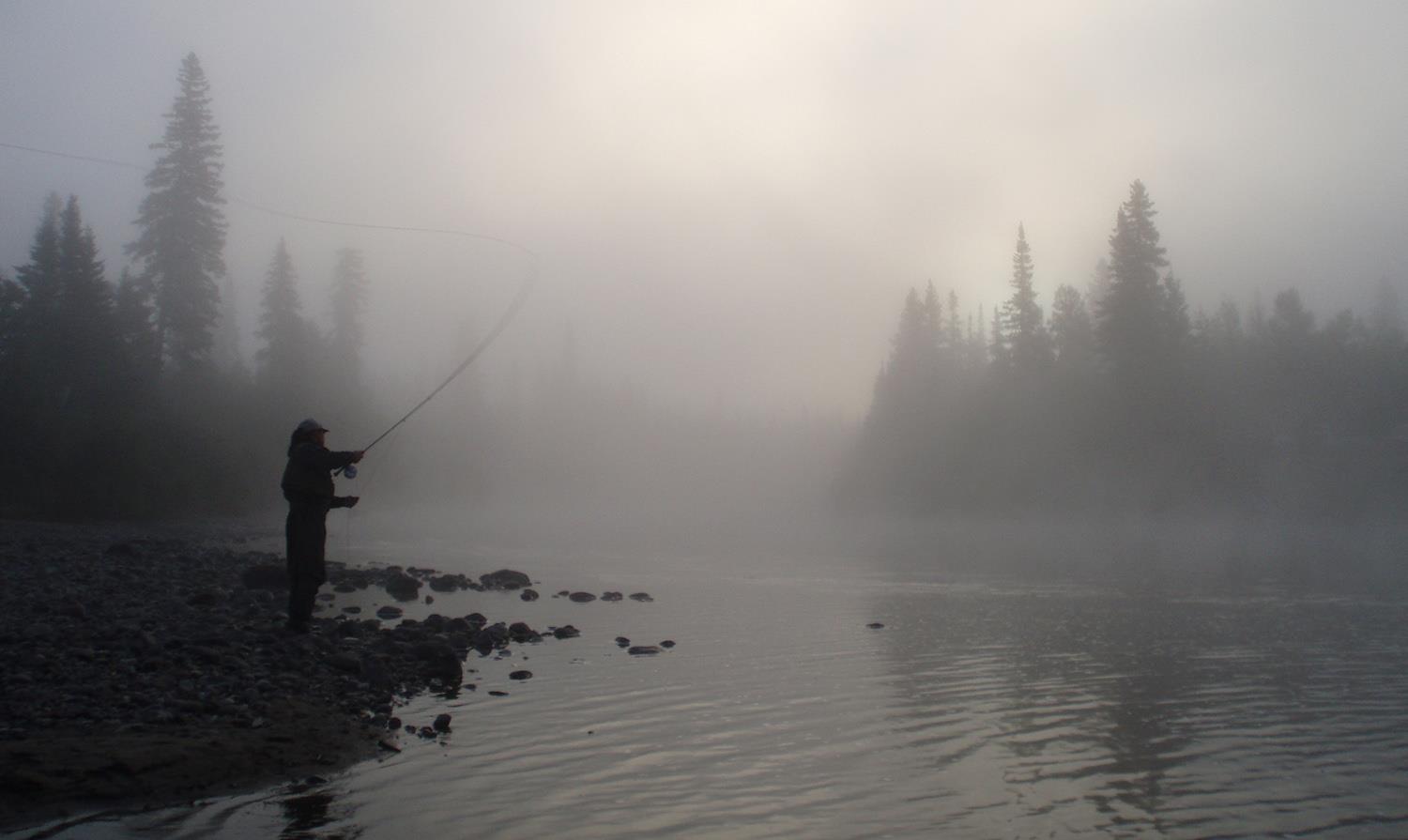Des Escoumins River
The Rivière des Escoumins rises in the Canadian Shield, at an altitude of over 600 metres. The 84 kilometer long river flows from northwest to southeast, through a narrow, mountainous valley on the Upper North Shore, before emptying into the St-Laurent Estuary in the municipality of Les Escoumins, 40 kilometers east of Tadoussac. Salmon fishing is available along 35 kilometers of the river.
The fast-flowing Rivière des Escoumins has a bed of gravel, boulders and cobbles, and its waters are tea-colored, changing little after a heavy rain. Salmon fishing is available by wading or canoe in 66 small, generally shallow pools. A logging road runs alongside the river, following its contour or not far from it, which simplifies access to the pools.
Before log driving in the 19th century, the Rivière des Escoumins enjoyed an excellent reputation for sport salmon fishing, with catches regularly reaching over 13 kilograms. In the 1980s, sustained community efforts led to a renaissance of the sport. Finally, in 2013, the municipal dam built in 1846, a major obstacle to salmon and trout, was dismantled.
For salmon fishing, the territory, which has zec status, is managed by the Corporation de gestion de la rivière à saumon des Escoumins, made up of the Conseil des Montagnais d'Essipit, the municipality of Les Escoumins and fishermen's representatives - a successful partnership, rewarded with tourism awards. Sea trout are also caught here.



